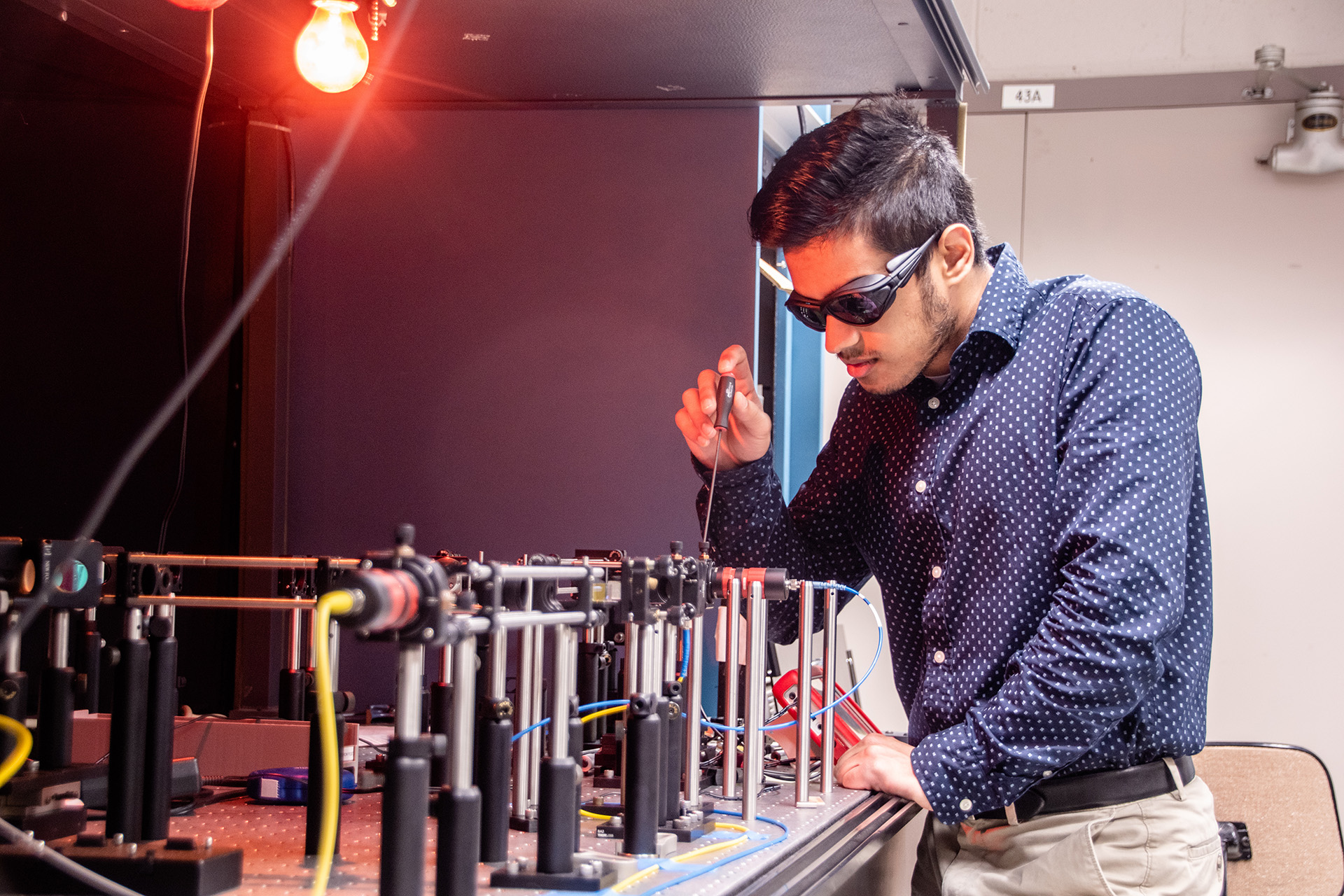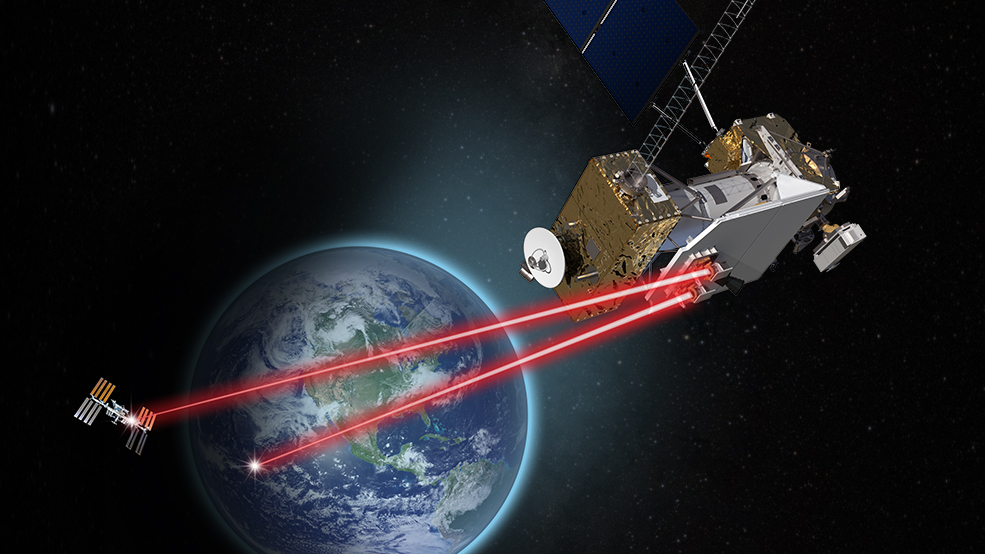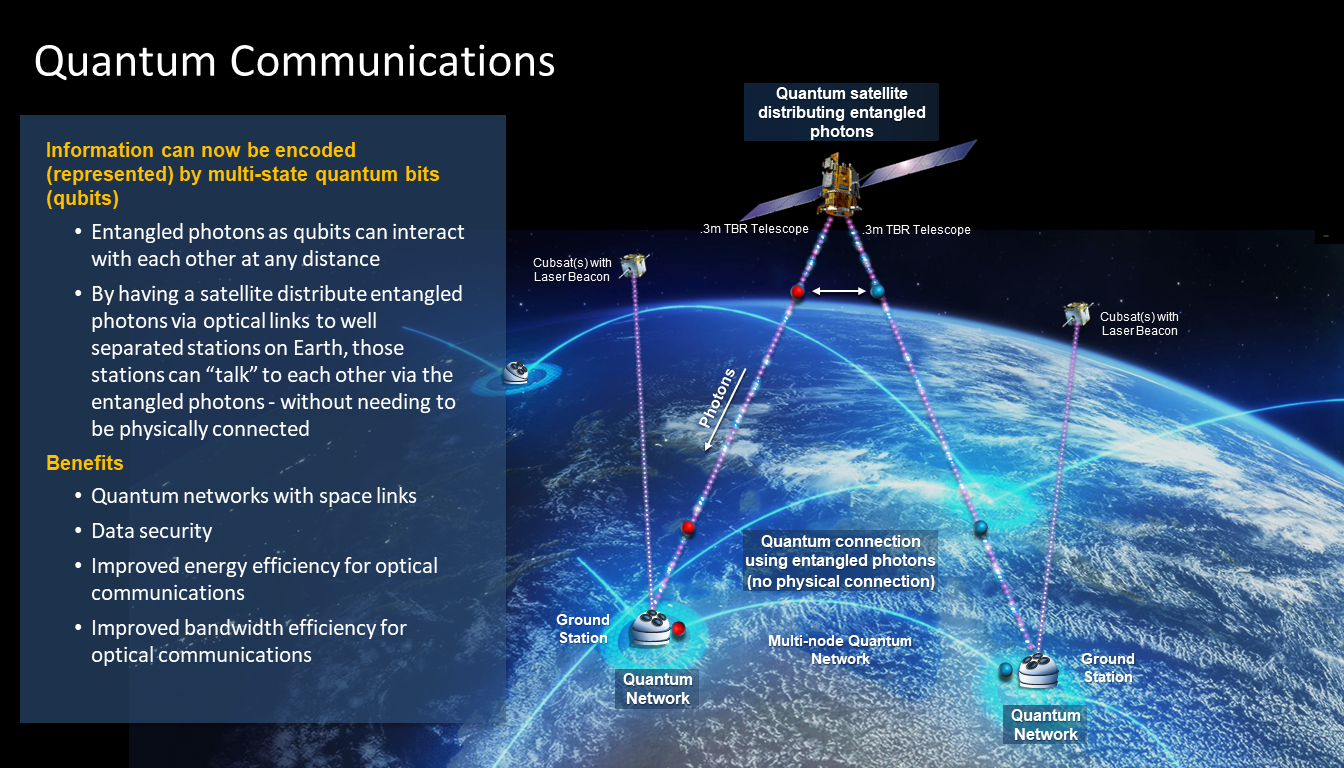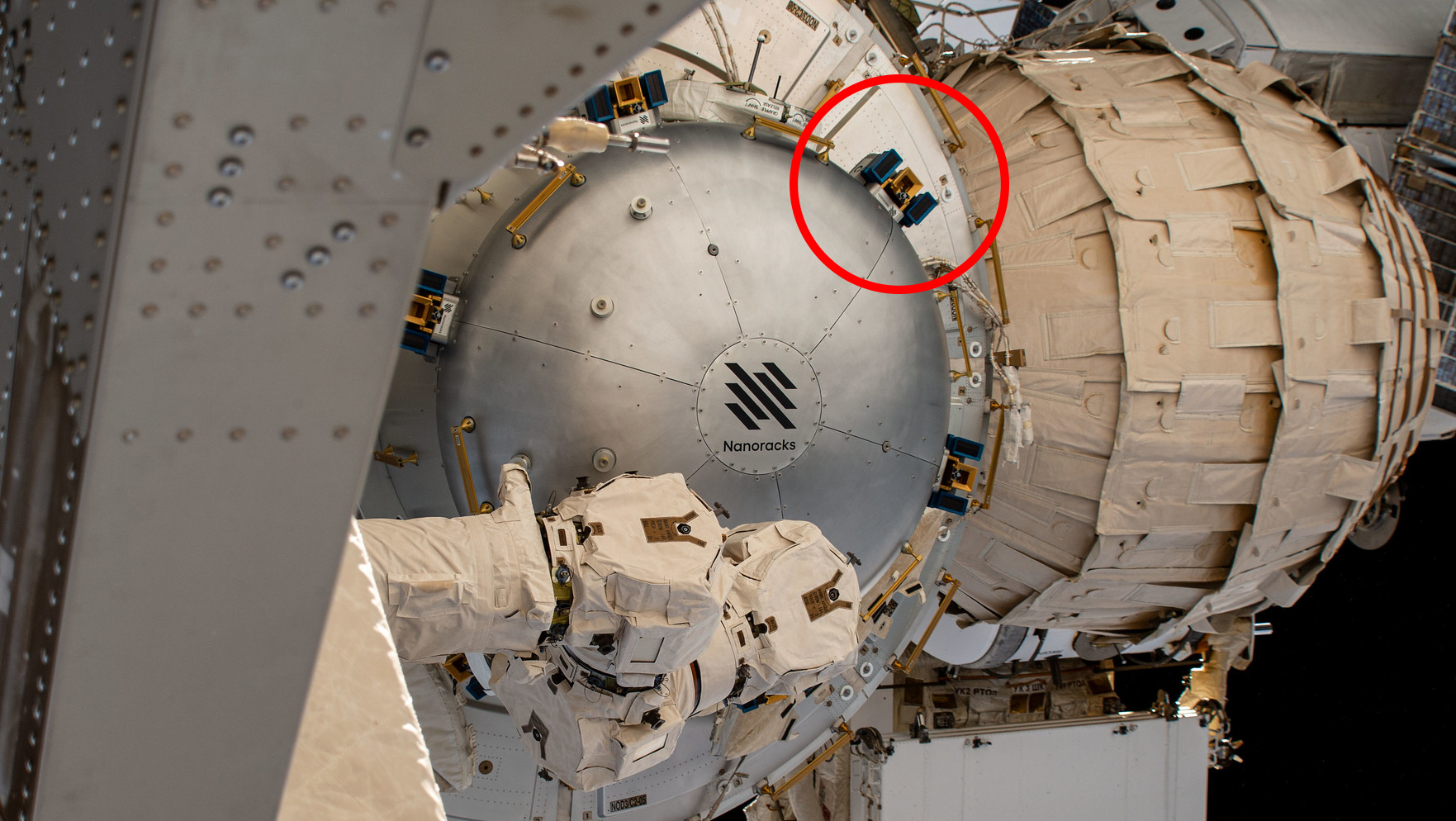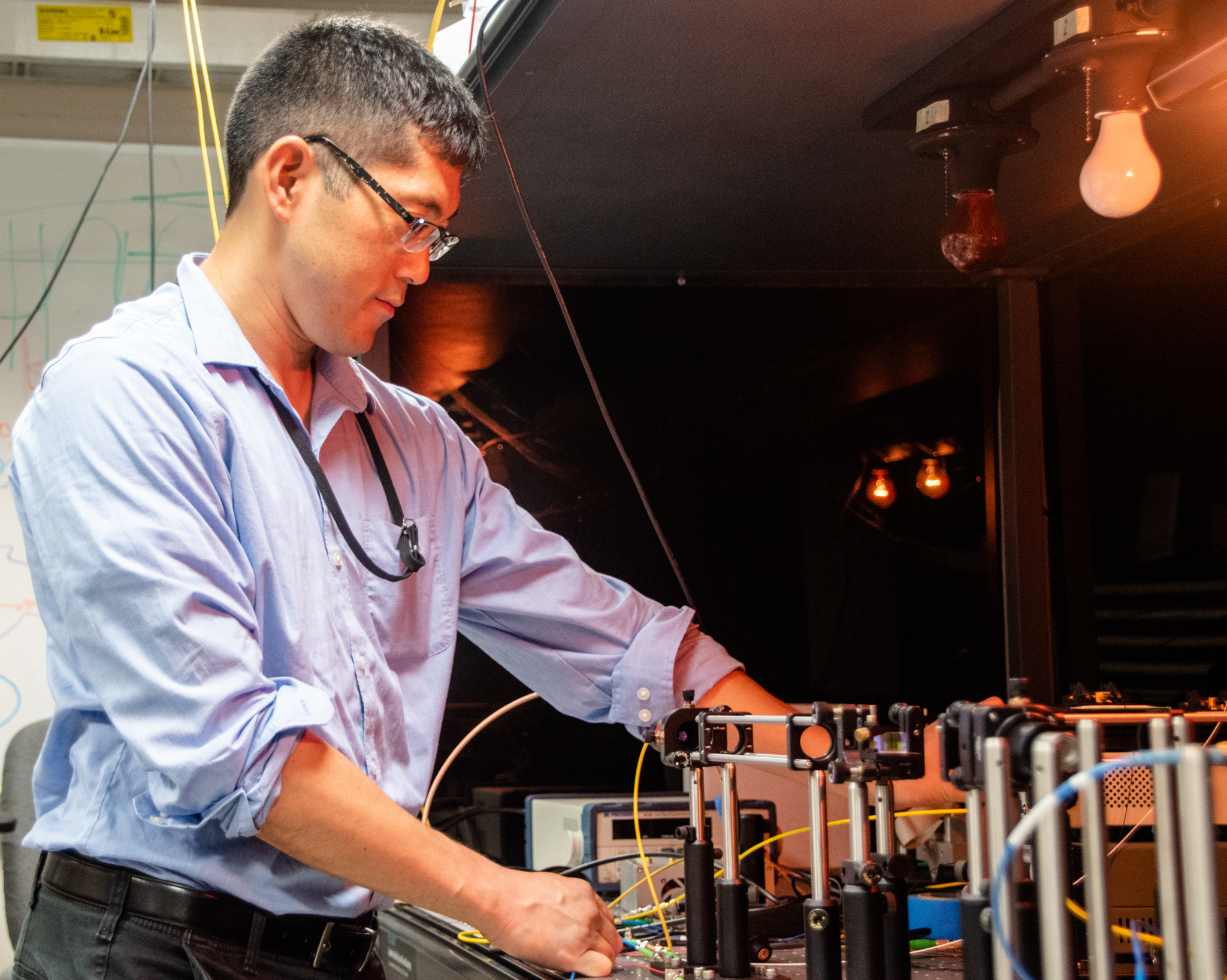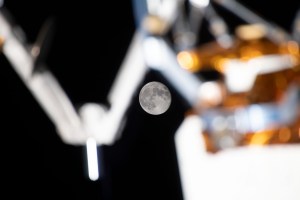What is Quantum?
Whether you know it or not, quantum physics touches our lives each day. Everything physical around us is made of matter, from the air we breathe to the water we drink—even our own bodies are made of matter. In its smallest measurable form, matter is made up of atoms. Within atoms are even smaller particles called electrons, protons, and neutrons—and protons and neutrons are made of even smaller units of matter called quarks.
Quantum physics is the study of these extremely small atomic particles and quarks. Quantum aims to understand the nature of energy and matter through these small particles in order to better understand the world around us and apply quantum theories to real-world technology solutions.
Applied quantum science is a foundational part of many components in many modern technologies, including cell phones and computers. In quantum computing, predictions are given in terms of probability, which allows us to find answers that traditional computers cannot provide.
How Does SCaN Use Quantum Technologies?
Rapid advances in quantum optics, driven by progress in micro-fabrication technologies, precision measurements, and development of coherent radiation sources, have recently enabled space-based demonstrations of new communications and networking technologies and protocols.
Leveraging optical communications, the second quantum revolution promises to significantly improve NASA’s mission in various scientific, exploration, and technological enterprises, but especially in space-to-ground and deep space communications and navigation. In free space, quantum communications and navigation will almost exclusively be based on optical channels and platforms. This is a capability NASA SCaN is actively striving and planning for. NASA will be advancing technology and capabilities in partnership with other government agencies as well as the commercial sector, which will be key to creating economic opportunities and national growth.
SCaN utilizes quantum technologies in a number of ways:
Atomic Clocks
Atomic clocks, ultra-precise clocks used in every GPS device and smartphone, work thanks to quantum mechanics. Atomic clocks on satellites orbiting Earth allow our devices to determine their locations. The satellites send signals from space, and the receiver triangulates your position by measuring how long the signals take to reach your GPS. Future technology will expand on this principle with deep space atomic clocks. Currently, spacecraft flying beyond Earth’s orbit don’t have a GPS to find their way through space. Atomic clocks on GPS satellites aren’t accurate enough to send directions to spacecraft, when being off by even less than a second could mean missing a planet by miles. The Deep Space Atomic Clock was the first atomic clock designed to fly onboard a spacecraft that goes beyond Earth’s orbit, dramatically improving the process.
Optical (Laser) Communications:
Lasers were developed based on our understanding of quantum mechanics. Quantum networking technology will build on the successes of laser communications to provide a host of new benefits over optical links: improved security, better timing, and even higher data rates.
Laser Communications Relay Demonstration (LCRD)
Exploring Together, NASA and Industry Embrace Laser Communications
Additionally, SCaN is partnering with other U.S. government agencies to research and develop capabilities in quantum information science (QIS), including in areas of adaptive optics, synchronization, detectors, and development of quantum use cases and applications. NASA will be advancing technology and capabilities in partnership with other government agencies as well as the commercial sector, which will be key to creating economic opportunities and national growth.
Educator Resources
This booklet targets both the wider audience interested in exploring quantum for the first time and experts wishing to discover NASA’s SCaN roadmap. We avoid equations as much as possible, though reader will need to engage at a high level with a small number of mathematical concepts. The booklet provides the necessary background on key concepts specifically related to quantum communication. Later chapters explore in more detail communication links and networks, their technological challenges, as well as the future of quantum communication and new applications that the field will enable.
NASA Space Communications and Navigation (SCaN) aims to use quantum communications to securely send and receive space data. Complete our new Quantum Code Crunchers activity to see if you can help NASA crack the hidden code!
Curious about quantum? Learn the basics of quantum physics and how NASA plans to use quantum to communicate in space through our Quantum 101 comic.
Quantum Kahoot! Game: Quantum Theory with NASA, Part 1: Vocabulary
The word “quantum” may sound mysterious, but it’s just about the physics of very small things. Learn more about NASA’s work with quantum physics with this quiz.
Quantum Kahoot! Game: Quantum Theory with NASA, Part 2: Quantum Physics Concepts and History
The study of the quantum realm draws on decades of chemistry, mathematics, physics, and engineering. Learn more about NASA’s work and the history of humanity’s investigation into the fundamental forces which hold the universe together!
From High School Physics Class to Quantum Research
In order to grow our capabilities in quantum, NASA needs to engage the future workforce. Hear more from Manon Bart, a quantum intern from the summer of 2021.
The Invisible Network Podcast – Episode 14: Ansible
Learn more about our quantum future in this episode of The Invisible Network podcast. In this episode, we discuss what’s science fiction and what’s science fact with SCaN quantum experts.
National Q-12 Education Partnership
Learn more about the White House Office of Science and Technology Policy and the National Science Foundation’s efforts to foster a range of training opportunities to increase the capabilities, diversity, and number of students who are ready to engage in the quantum workforce.
Latest Quantum Achievements
Explore NASA’s achievements in quantum research and technology applications across the agency.
Space Station to Host ‘Self-Healing’ Quantum Communications Tech Demo
Quantum Technologies are Changing the Face of Unmanned Aircraft Communications
NASA’s Jet Propulsion Laboratory Cold Atom Lab
Quantum Workshop
In January 2020, NASA’s Space Communications and Navigation (SCaN) and the National Institute of Standards and Technology (NIST) sponsored a workshop hosted by the Space Sciences Laboratory at the University of California – Berkeley called Workshop on Space Quantum Communications and Networks: Developing a Roadmap to Quantum Communications in Space. The workshop brought together over 70 esteemed technical and program leaders from academia, industry, and government agencies who, over two days, determined which critical quantum technologies for space communications and networking NASA needed to develop and mature for an efficiently-designed and executed quantum-technology demonstration space mission. Presentations from the workshop and the final report can be found below:
Workshop Presentations: Developing the Roadmap to Quantum Communications in Space
World Quantum Day
World Quantum Day is a global initiative that aims to promote the public’s understanding of Quantum Science and Technology. NASA’s Space Communications and Navigation program office is excited to participate in this year’s World Quantum Day on April 14, 2022. More information on World Quantum Day can be found on the World Quantum Day website.
NASA’s participation in World Quantum Day is in conjunction with other federal agencies as part of the National Quantum Initiative. The National Quantum Initiative (NQI) Act, signed into law December 21, 2018, provides for the continued leadership of the United States in Quantum Information Science (QIS) and its technology applications. The NQI Act calls for a coordinated Federal program to accelerate quantum research and development for the economic and national security of the United States. More information can be found at quantum.gov.
SCaN Quantum Contacts
Dr. Eleanor G. Rieffel
Senior Research Scientist
Lead, Quantum Artificial Intelligence Laboratory (QuAIL)
NASA’s Ames Research Center
eleanor.rieffel@nasa.gov
La Vida Cooper
Associate Program Manager
Exploration and Space Communications (ESC) Projects Division
Quantum Technology Development
NASA’s Goddard Space Flight Center
lavida.d.cooper@nasa.gov
John Nowakowski, P.E.
Engineering Project Management
Quantum Metrology Research
NASA’s Glenn Research Center
john.j.nowakowski@nasa.gov




























